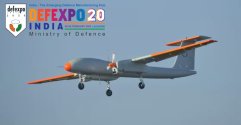First, they need to bring back the Western educated Indians home to help out.
Why would (more than a small minority of) Western educated Indians — who are able to reside in FIVEYE countries or even the EU — want to return to what President Trump
may soon openly characterize as a "shithole?"

The best thing about being self sufficient like China is they dont need to depend on any countries for the most part. If they need something they will build it on the spot. For countries that are not self-sufficient, they need to buy weapons from another countries which is a hassle. There is a possible that no one will sell to you.
The problem here is that despite the Indian military being relatively weak
vis-a-vis the size of the Indian population, the powers that be in New Delhi feel a constant need to
project an image of martial prowess owing to domestic political considerations.
Anyone who've logged onto "Indian Twitter" can tell you just how obnoxiously proud, if not laughably deluded the
Jai Hind! Jai Bharat! community is. The Indian public wants, demands and expects to be able to take pride in their military, and the Indian authorities can't say no!

It's the principal reason why Indian military parades, despite significant "differences in aesthetics," are almost as impressive as

, and even more frequent than China's:
TBF, at the same time, the Indian military is a source of political legitimacy and a vehicle for national unity for both the nationalist BJP and the broader Indian state.
It's
arguably "good politics" for PM Modi and his political cohorts:
However, there's a price — in terms of opportunity cost — for the political legitimacy brought forth by the Indian military, on top of the trillions of rupees spent.
Ironically, domestic programs — that may not bear fruit for a decade or two, if not longer — are
neglected so the Indian MoD can afford to buy shiny foreign toys like the Dassault Rafale to help the IAF and BJP flex in public.
To put it succinctly: the Indian military-industrial complex is struggling to become self sufficient because
the Indian government prioritizes optics over substance.


